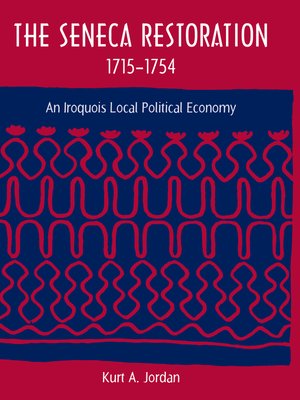The Seneca Restoration, 1715-1754
ebook ∣ An Iroquois Local Political Economy · Co-published with the Society for Historical Archaeology
By Kurt A. Jordan

Sign up to save your library
With an OverDrive account, you can save your favorite libraries for at-a-glance information about availability. Find out more about OverDrive accounts.
Find this title in Libby, the library reading app by OverDrive.



Search for a digital library with this title
Title found at these libraries:
| Library Name | Distance |
|---|---|
| Loading... |
The Iroquois confederacy, one of the most influential Native American groups encountered by early European settlers, is commonly perceived as having plunged into steep decline in the late seventeenth century due to colonial encroachment into the Great Lakes region. Kurt Jordan challenges long-standing interpretations that depict the Iroquois as defeated, colonized peoples by demonstrating that an important nation of that confederacy, the Senecas, maintained an impressive political and economic autonomy and resisted colonialism with a high degree of success.
By combining archaeological data grounded in the material culture of the Seneca Townley-Read site with historical documents, Jordan answers larger questions about the Seneca's cultural sustainability and durability in an era of intense colonial pressures. He offers a detailed reconstruction of daily life in the Seneca community and demonstrates that they were extremely selective about which aspects of European material culture, plant and animal species, and lifeways they allowed into their territory.







